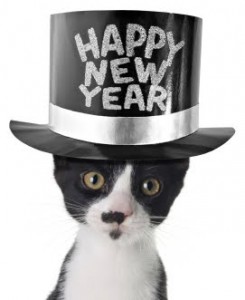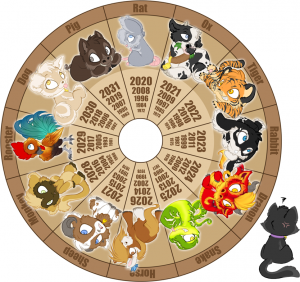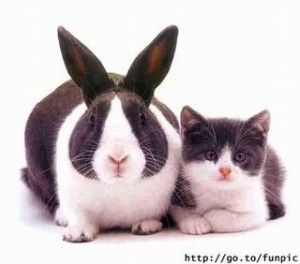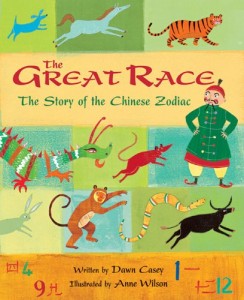Happy Lunar New Year to everyone! May you and your family be blessed with happiness, health, luck, success, and the chance to read my blog many times this year 🙂
I thought I’d spend a little time researching the glorious Inter-Web to learn more about this great tradition. Even as an Asian growing up with this stuff, there are things you just observe but don’t really understand the meanings or origins of. To observe the holiday properly, I should really be taking the next two weeks off work. But nooo, I’m not taking any time off. So just an hour or two of research isn’t so bad 🙂
Don’t you mean Happy Chinese New Year?
Don’t let Chinese oppressors fool you – there is more to Asia than China. Just because there are 1.3 billion of them and 100 of the rest of us doesn’t mean that you should only listen to them! If you are a cultured Gringo, you may have asked yourself “hmm, to which of my Asian friends should I wish a happy new year?” Obviously Chinese ones, since it’s often called Chinese New Year. The Vietnamese too, since I am blogging about it. The Vietnamese new year is called Têt. Even Koreans as well. Here’s how to say Happy New Year in several languages:
- Vietnamese: Chúc mừng năm mới
- Chinese Mandarin: Gōng xǐ fā cái (恭禧發財)
- Chinese Cantonese: Gong hey fat choy (恭禧發財, written the same as Mandarin)
- Korean: Sae-hae-bok ma-ni pa-dŭ-se-yo! (새해복 많이 받으세요)
What about the other Asian countries, like Japan? I wondered this myself.
- Apparently Japan used to follow the Chinese Zodiac and observe Lunar New Year. But the Meiji Restoration in the late 1800’s put the Japanese on the Gregorian (western) calendar, and the new year on January 1.
- Southeast Asian countries like Laos, Cambodia, and Thailand used to observe Chinese New Year, but heavy South Asian/Hindu influence and climate differences apparently moved the new year to the fifth lunar month – April.
- The Philippines is pretty much “Latin Asia” – Jan 1 new year and Catholic.
- In Malaysia, they celebrate Jan 1, Chinese New Year, and even Islamic New Year.
What the heck is a Lunar New Year anyways?
While the answer on the surface (duh, it’s the new year of the lunar calendar) may be simple, it’s really a little more complex… Let’s step back a little. The sun and the moon have been used for telling time since the early days of civilization. The concept of the year is pretty obvious. It’s very useful for figuring out seasons, weather, and planning agriculture. Each time the earth is at a certain spot in its orbit around the sun makes perfect sense for a new year.
The hard part about the year is that it’s a really long time. Every day looks like the previous day, until you realize a big difference several months later, like when summer has turned into autumn and the leaves start to fall. Hence a more useful and shorter-term measure of time is the moon’s position around the earth – the month. The moon takes about 30 days to travel around the earth. It’s pretty easy to tell where in the month you are too – new moon, waxing crescent moon, full moon, waning gibbous moon, etc. That’s why every civilization has the concept of the month.
The Moon makes roughly twelve revolutions around the Earth in a year. I bet this behavior of nature is why you see a base 12 system (aka duodecimal) used in many units of time: 12 months in a year, 12 hours of day and night. Many Asian countries used the twelve lunar cycles as the main basis for determining the length of a year.
Problem is that it’s not exactly twelve cycles – it’s really 12 cycles + a few days. So every once in a while, you have to add an extra “leap” month in there to make up for it. Since this system adjusts months to fit the earth’s position around the sun, it’s technically called a lunisolar calendar. Thought I’d insert that random trivia fact 🙂 The lunar new year usually occurs at the beginning of the second lunar cycle (new moon) after the winter solstice.
Strange, eh? Are these crazy Asians making life too complex? Well there’s another well-known holiday that is determined in a similar way. Easter, as recognized by Western (non-Orthodox) Christian churches, occurs on the first Sunday following the full moon that occurs after the spring equinox.
The Chinese Zodiac
Lunar New Year is strongly associated with the Chinese zodiac. The Chinese zodiac is like the western zodiac in some ways: there’s a cycle, and there are twelve phases to the cycle. The western zodiac, which came from the Greeks, is based on the Sun’s position across the sky. The twelve signs of the western zodiac are supposed to be the twelve constellations through which the sun passes (though the signs have been abstracted for astrological purposes, so don’t believe any nonsense about the earth wobbling and a 13th sign). The constellations refer to characters or events in Greek mythology.
The Chinese zodiac, however, is not based on any constellations. Asian philosophy/religion/astrology is very closely tied to nature. The Chinese zodiac’s twelve signs are based on everyday animals and the characteristics associated with them. There’s a good Wikipedia page that describes the characteristics in detail. Another difference is that the Chinese zodiac cycle is in years rather than months, so the entire year of 2010 is Tiger, and 2011 is Rabbit/Cat. Here’s some awesome artwork by DarkuAngel that shows the cycle:
There is more complexity to the Chinese zodiac as well. There’s a macro cycle involving the 5 elements (Wood, Fire, Earth, Metal, Water). Not all people of the same sign are the same. A 1975 Cat/Rabbit is a Wood Cat/Rabbit, while a 1963 Cat/Rabbit is of Water. This makes the astrological cycle 12 x 5 = 60 years. There are other considerations for which month and even which hour you were born. The end result is several thousand possible astrological personality traits. No wonder Asians actually pay astrologers for significant readings!
2011: Year of the Cat? Or Rabbit?
I have wrestled with this mystery since my birth. Those of you born in 1975 like me, or 1951, 1963, 1987, 1999 may have experienced similar inner turmoil as children. Now that it’s 2011, you can all join me in the controversy. In Vietnam, 2011 marks the fourth and luckiest year of the lunar cycle: the year of the Cat. Everywhere else, it’s the year of the Rabbit. It may be true that cats and rabbits both have whiskers and pointy ears, are good jumpers, and breed a lot. But cats and rabbits are pretty different animals, really… Regardless, let’s talk about the lastrological traits of whatever-this-small-furry-mammal-is:
- Luckiest of the signs (followed by the rat). Talented and affectionate, yet shy. You are peace seeker.
- Gracious, good friend, kind, sensitive, soft-spoken, amiable, elegant, reserved, cautious, artistic, thorough, tender, self-assured, astute, compassionate, flexible. Can be moody, detached, superficial, self-indulgent, opportunistic, stubborn.
- The best life partners would include the Sheep or Pig but not Rooster.
Let’s also add a description of a cat/rabbit’s astrological trine, which is kind of a harmonious grouping of a few signs. There are four groupings of three signs.
The fourth trine consists of the Rabbit, Sheep, and Pig. The quest for these three signs is the aesthetic and beautiful in life. Their calm nature gives them great leadership abilities. They are artistic, refined, intuitive, and well-mannered. These souls love the preliminaries in love, and are fine artists in their lovemaking. The Rabbit, Sheep and Pig have been bestowed with calmer natures than the other 9 signs. These three are compassionately aware, yet detached and resigned to their condition. They seek beauty and a sensitive lover. They are caring, unique, self-sacrificing, obliging, sensible, creative, empathic, tactful, and prudent. They can also be naive, pedantic, insecure, cunning, indecisive, and pessimistic.
I’m honestly a bit of a skeptic, but I gotta admit that many of these traits are true of myself (well, the good traits hehe). Ladies, remember: I’m seeking beauty and a sensitive lover, and I could go for some artistic lovemaking! Haha 🙂 Come to think of it, I even had a great relationship with a Pig before, and a not-so-great one with a Rooster…. But I digress….
Ok, now why do we have Cats in Vietnam and Rabbits everywhere else? The Chinese zodiac dates back a very long time – beyond 2500 BCE. This is almost 2000 years before the Greeks (who came up with the western zodiac). There are many legends and stories. Culture has evolved over time too. Unfortunately, there really is no accurate record of what happened.
The zodiac origin story that I enjoy the most is of the Great Race. Click this link for the story. It’s a wonderful read – it’s a great myth tale, and it clearly depicts the personalities of the animals. It’s even great for telling your children – check out the book on Amazon 🙂
While some have argued that somehow “rabbit” got turned into “cat” due to some translation error into Vietnamese, I’m not so sure. The legends all feature the cat prominently in the story, as one of the 13 (or 12) animals. Either the cat got screwed out of the race, or somehow it finished the race. How do you mess up the translation of part of the story (rabbit to cat) but maintain the cat’s role in the story? Highly unlikely, I say! Furthermore, Vietnam was occupied by China for over 1000 years. There had to have been a tremendous amount of culture swapping – too much for a simple translation problem to get in the way.
Bottom line: no one really knows what’s up with the Cat in the Vietnamese zodiac. I think the folks selling Trix cereal would rather see the lucky rabbit as the winner. However, Al Stewart would probably make a lot more money with royalties if 2011 were truly the year of the Cat. As for me, all I have to say is “meow.”







